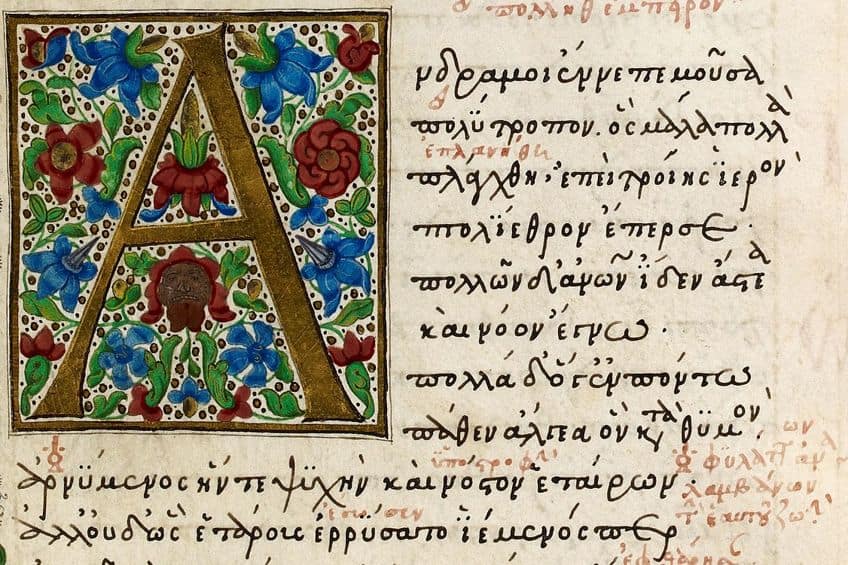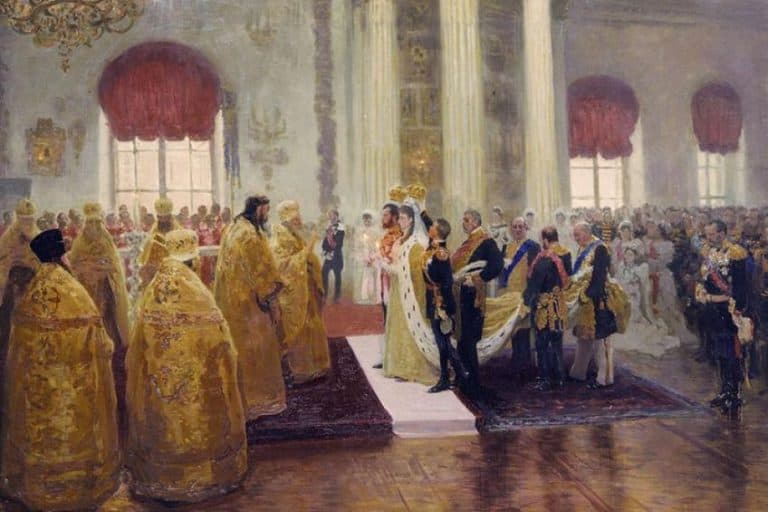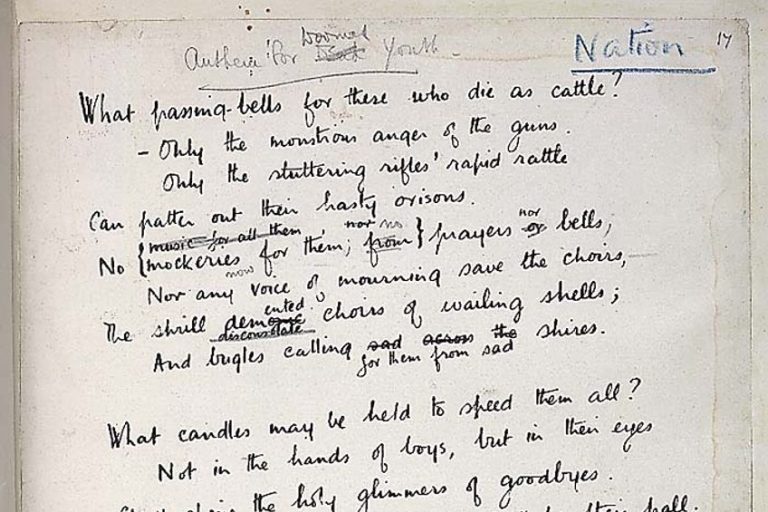Epic Simile – Introducing the Staple of Epic Poetry
Some things in our world are extremely epic! Or at least the common use of the term “epic” has undergone a bit of a change in more recent years. Sadly, we are not going to be checking out that more contemporary use of the term and will instead be looking at what is epic through the lens of a more literary perspective. The epic simile is something that derives from epic poetry, and, as such, it has strong associations with ancient texts. This is why we are going to discuss this epic simile alongside an understanding of how it differs from a standard simile, the way it has been used in the past, some of the uses of the epic simile, and a number of epic simile examples. If learning about epic poetry and the terms associated with it sounds like a great time to you, then have I got good news for you! Each of the sections below will examine that very concept for you!
Table of Contents
- 1 A Look at the Epic Simile
- 2 A Summary of the Epic Simile
- 3 A Definition of the Epic Simile
- 4 The Epic Simile Versus the Standard Simile
- 5 The History of the Epic Simile
- 6 The Characteristics and Uses of the Epic Simile
- 7 The Reason for the Name of the Epic Simile
- 8 Epic Simile Examples
- 9 Frequently Asked Questions
A Look at the Epic Simile
When we think of the concept of the simile, we often see it as having a connection to something like a metaphor. It is a kind of comparison. This is the case with the epic simile too, but it is not quite the same. This term, which is also known as the Homeric simile, is very old and can be found lurking within many an ancient text. It is found in some ancient Greek sources and those that followed on from it. We should probably get into it rather than waiting around, shouldn’t we?

A Summary of the Epic Simile
When it came to my old teaching years, I often found that it was best to provide students with a few summaries of concepts. In my experience, this helps many students, especially during the period in which they are prepping for exams. You may not be a student, but a good summary can still go a long way toward helping:
- The epic simile is a kind of extended simile. The epic simile is still a kind of simile, but rather than being a simple comparison that uses like or as to establish said connection, it will still use these words but will run for several lines. So, it’s basically just a long simile.
- The epic simile originated with Homer. As the epic simile is a staple in epic poetry, it’s understandable that it came from the writer of The Iliad and The Odyssey. This is also why this form of simile has come to be known as the Homeric simile.
- The epic simile is still used to this day. While the epic simile is, as the name suggests, associated with epic poetry, it can be used outside of that format. This extended simile is still used in contemporary poetry, even if the form is generally noted within far older texts.
These three points may be a very brief number of pointers toward an understanding of the epic simile, but we’ll only really understand it when we get more into the weeds and examine this form of simile in much greater depth.
That is what we’ll be getting into now.
A Definition of the Epic Simile
The concept of the epic simile is not all that difficult to understand. In simple terms, this is a simile that is extended. It is found in much longer poetry, namely epic poetry (although we’ll discuss that in some more depth below). The idea behind the epic simile is that it can last for several lines to increase the complexity of the comparison that it is attempting to draw between two different things. The length of the epic simile is why it is generally relegated to longer poems.

The Epic Simile Versus the Standard Simile
The epic simile is a simile. That much is absolutely similar between the standard simile and the epic simile. However, there are significant differences that can be noted between these two types of similes. The standard simile requires the use of like or as when a comparison is made, and this is also the case with epic simile. The difference is in the length of each of the similes in question. The epic simile is significantly longer. While a standard simile will usually be a rather quick comparison that will maybe take up a line or two in a poem, various epic simile examples will instead take many lines. The complexity of the comparison will also unfold as time goes on and one line leads into the next.
This means that, essentially, the primary difference between them is that the epic simile is significantly longer and more complex than the standard simile. It’s still a simile, though.
The History of the Epic Simile
The epic simile saw its use begin in the works of Homer, which is why it’s also known as the Homeric simile. This indicates that the origins of the epic simile can be traced to the literature of ancient Greece, and so the epic simile is a particularly ancient poetic device. However, this is only the earliest written record of the epic simile, but it likely existed in the oral tradition for even longer than the work of Homer.

The epic simile would continue to be used throughout epic poetry through the centuries, as we’ll explore with some of the epic simile examples in one of the sections below. However, as time went on and the epic poem became far less common, the time of the epic simile did somewhat wane. There’s no rule against using the epic simile, but thanks to the length of its comparison, it is generally only found in longer texts.
Epic simile examples can still be found, they may just be harder to find in the present day.
The Characteristics and Uses of the Epic Simile
The primary characteristic of the epic simile is in its complexity. The number of lines needed to effectively produce an epic simile requires a poem that is already rather long, and usually one that is narratively oriented. This means that the epic simile can also often be used as a means of decorating a text with more comprehensive language and comparisons that allow for a deeper engagement with the narrative, characters, and setting of an epic poem.

The Reason for the Name of the Epic Simile
The name of the epic simile is a rather simple one. It is simply called this because it originated in epic poetry. The other name for the epic simile is the Homeric simile, and this further indicates this epic poetry origin. The work of Homer led to the creation of two of the most important texts in the Western canon, The Iliad and The Odyssey.
However, the epic simile could also be seen as something of a misnomer in a sense because it can be used outside of the epic poem, but because of its extended nature, it’s unlikely to be found outside of long poems and many very long poems happen to also be epic poems.
Epic Simile Examples
While the standard simile can be found throughout poetry, and non-poetic sources too, the epic simile is a little bit of a different kind of beast. If we want to better understand Homeric similes, we’ll need to get closer to the concept. The best way to do this is to interrogate a number of epic simile examples. These are some of the best-known of all the epic similes that have been used in poetry. So, with that bit of introduction out of the way, we can safely get into our look at a few epic simile examples.

The Iliad (7th or 8th Century BCE) by Homer
| Date Published | 7th or 8th century BCE |
| Type of Poem | Epic poem |
| Rhyme Scheme | None |
| Meter | Dactylic hexameter |
| Topic | The Trojan War |
The Iliad is one of the earliest of all the epic poems and, as the earliest work of Homer, it is also the place in which a Homeric simile is rather likely to occur. In this case, an epic simile can be found in a section such as the extended comparison between the great hero of the Trojan War, Ajax, and a massive, powerful beast. The comparison between these two entities proceeds for many lines as the comparison is repeatedly reinforced.
The power of the gigantic beast, as well as the slowness of something so large, are both used to better understand this major figure in the Iliad.

The Aeneid (30 – 19 BCE) by Virgil
| Date Published | 30 – 19 BCE |
| Type of Poem | Epic poem |
| Rhyme Scheme | None |
| Meter | Dactylic hexameter |
| Topic | The story of Aeneas |
The Aeneid is considered to be one of the greatest of all the Latin epics, and it would go on to become one of the most important texts of the Roman world. In it, Virgil uses a number of epic simile examples, and one of these compares the battle between the Trojans and Greeks from the Trojan War to the terrible winds that press their way into the Alps. The comparison between two warring factions and a force of nature shows the intensity that can be felt between these two sides of a grand, mythical conflict.
The use of an epic simile allows for this kind of comparison to have significant weight behind it.

Paradise Lost (1667) by John Milton
| Date Published | 1667 |
| Type of Poem | Epic poem |
| Rhyme Scheme | None |
| Meter | Iambic pentameter |
| Topic | The Fall of Man and the angels |
Paradise Lost is one of the most significant and influential epic poems written in the English language, and an important text in Christian literature. It follows the Fall of Man from the Garden of Eden as well as the way in which Satan led a number of angels to betray god and so fall from heaven. In this epic poem, a great epic simile example is used when Satan departs from hell, and his departure is compared to a great fleet of ships. This simultaneously shows the immense vastness of hell itself but also the power of Satan as a dark figure. The epic simile is used to produce this image of terrible majesty that turns Satan into such a formidable foe.

Whenever you turn your head, there seems to be some new type of concept sitting around and waiting for you to learn about it. The epic simile is one such concept. It has been around for a particularly long time, but it is also one of those types of concepts that have become relegated to a lesser-known part of literary understanding because the epic poem has become less common than it used to be. This article attempted to shine a light on the epic poem by examining the idea in and of itself while also discussing its characteristics, history, relation to the standard simile, and some epic simile examples. Hopefully, this has been a good discussion for those who enjoy and appreciate these sorts of things. Now, you just need to read a few epic poems on your own and try to identify the epic similes when they are presented to you.
Frequently Asked Questions
What Is the Epic Simile?
This type of simile is a kind of extended simile that entails a far more detailed comparison than those found in ordinary similes. This type of simile, also called the Homeric simile, is a type of non-metaphor comparison that will continue for several lines within a poem. It is most associated with epic poetry.
How Common Is the Epic Simile?
This type of simile is not all that common in shorter poems. However, the Homeric simile can be found in many epic poems, and it even derives its name from this type of poetry. However, it could be used in other forms of poetry even if this is not necessarily the case in most instances of its use.
Why Is It Known as an Epic Simile?
The reason for the name that the epic simile has been loaded down with for all these years is because it is most associated with epic poetry. This is also why it has come to be known as the Homeric simile. It is found in the ancient works of Homer, and so it is a particularly old form of this poetic device.
What Are the Characteristics of the Epic Simile?
The primary characteristics of the epic simile are marked by its extended nature, the use of standard like or as words, its length and complexity, and the fact that it tends to be found in narrative-oriented texts. This is still a kind of simile, but it’s just a simile that can stretch for far more lines than your average simile.
What Are Some of the Best-Known Epic Simile Examples?
When it comes to epic simile examples, you need to look toward a handful of famous epic poems. These include works such as The Iliad (7th or 8th Century BCE) by Homer, The Aeneid (30 – 19 BCE) by Virgil, and Paradise Lost (1667) by John Milton. There are epic similes found throughout many ancient epic poems, but these are some of the most notable.
Justin van Huyssteen is a freelance writer, novelist, and academic originally from Cape Town, South Africa. At present, he has a bachelor’s degree in English and literary theory and an honor’s degree in literary theory. He is currently working towards his master’s degree in literary theory with a focus on animal studies, critical theory, and semiotics within literature. As a novelist and freelancer, he often writes under the pen name L.C. Lupus.
Justin’s preferred literary movements include modern and postmodern literature with literary fiction and genre fiction like sci-fi, post-apocalyptic, and horror being of particular interest. His academia extends to his interest in prose and narratology. He enjoys analyzing a variety of mediums through a literary lens, such as graphic novels, film, and video games.
Justin is working for artincontext.org as an author and content writer since 2022. He is responsible for all blog posts about architecture, literature and poetry.
Learn more about Justin van Huyssteen and the Art in Context Team.
Cite this Article
Justin, van Huyssteen, “Epic Simile – Introducing the Staple of Epic Poetry.” Art in Context. January 18, 2024. URL: https://artincontext.org/epic-simile/
van Huyssteen, J. (2024, 18 January). Epic Simile – Introducing the Staple of Epic Poetry. Art in Context. https://artincontext.org/epic-simile/
van Huyssteen, Justin. “Epic Simile – Introducing the Staple of Epic Poetry.” Art in Context, January 18, 2024. https://artincontext.org/epic-simile/.









